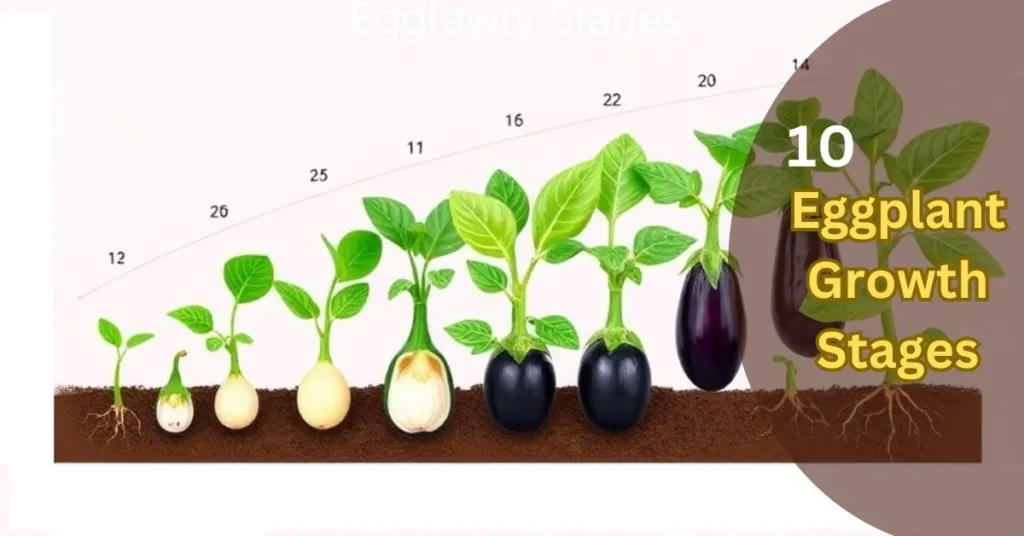It’s easy to mistake certain peppers for Jalapeños because of their similar shapes, sizes, and colors. This common problem can lead to surprising outcomes, especially with varying heat levels.
From personal experience, expecting a mild pepper and biting into something fiery is quite the shock! Whether you’re growing your own or buying at the store, knowing the details is key to avoiding these surprises.
A helpful guide to identify Jalapeños and their lookalikes based on size, shape, and heat is invaluable. Many varieties share a similar appearance but taste completely different, so it’s crucial to learn their characteristics. By doing so, you’ll confidently explore new flavors without the risk of unexpected results.
| #- | Pepper Name | Size | Shape | Skin Texture | Wall Thickness | Heat Level (SHU) |
|---|---|---|---|---|---|---|
| 1- | Jalapeño | 2–3 in | Cylindrical | Smooth | Thick | 2,500–8,000 |
| 2- | Serrano | 1.5–3 in | Slender, tapered | Smooth | Thin | 10,000–23,000 |
| 3- | Fresno | 2–3 in | Cylindrical | Smooth | Medium | 2,500–10,000 |
| 4- | Hungarian Wax | 4–6 in | Tapered | Slightly waxy | Thin | 5,000–15,000 |
| 5- | Poblano | 4–6 in | Broad, tapered | Wrinkled | Thick | 1,000–2,000 |
| 6- | Shishito | 2–4 in | Slender, wrinkled | Smooth | Thin | 100–1,000 |
| 7 | Green Cayenne | 3–5 in | Long, slender | Smooth | Thin | 30,000–50,000 |
Which Peppers Look Like Jalapenos? Top 9 Ones
When it comes to identifying peppers that closely resemble jalapeños, there’s a fascinating variety of options that stand out due to their similar shapes, sizes, and vibrant green colors.
From the slender Serrano to the spicy Thai Chili, each pepper offers its own unique blend of flavors, textures, and heat levels. Whether you’re a culinary enthusiast or just someone exploring the world of peppers, understanding their differences can help you choose the right one for your recipe.
Some popular choices include the versatile Fresno, the tangy Hungarian Wax, the mild yet rich Poblano, and the crisp Shishito. For those who love bolder heat, Green Cayenne, Green Tabasco, and the fiery Caribbean Red Habanero offer plenty of kick. Each pepper may look like a jalapeño, but their different heat levels and flavors ensure that they bring their own distinct charm to the table.
1. Serrano Peppers: Peppers That Look Like Jalapeños but Hotter
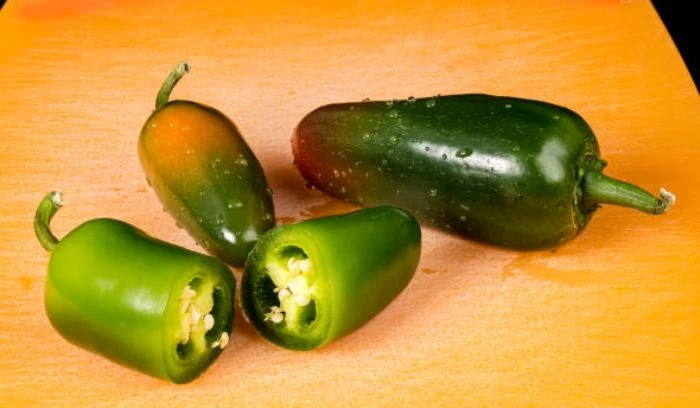
| Attribute | Description |
|---|---|
| Pepper Name | Serrano |
| Looks Like | Jalapeños |
| Size | Smaller |
| Shape | Long, smooth, tapered tip |
| Flavor Profile | Bright, fresh |
| Heat Level | 10,000–23,000 SHU (spicier than jalapeños) |
| Usage | Ideal for salsas, marinades, or raw dishes where heat and flavor are needed |
Serrano peppers are a fantastic choice if you’re looking for peppers that are similar in appearance to jalapeños but pack more heat. They look almost identical when they grow, with their green unripe color and shiny surface, making it easy to confuse them if you’re new to growing these plants. While the size of both is comparable, Serrano peppers are slightly smaller in length and have a slender shape that tapers to a sharper tip. Unlike the rounded and wider jalapeño, the walls of a Serrano are thinner, giving it a lighter feel.
For gardeners, the plants are compact and bushy, often producing more peppers at a time. It’s helpful to use a label when picking to avoid grabbing the wrong pepper, as Serranos are much spicier, sometimes five times hotter than jalapeños.
These plants thrive in warm weather and well-drained soil, and their fruits start green but turn red when they ripen fully. If you’re after a jalapeño lookalike that delivers a stronger spicy kick, Serrano peppers are the perfect choice for your garden.
2. Fresno Peppers

| Attribute | Description |
|---|---|
| Pepper Name | Fresno |
| Comparison | Similar to jalapeños in size and appearance |
| Size | About the same size as jalapeños |
| Shape | Smooth, slightly rounded |
| Flavor Profile | Sweet and mild when ripe |
| Heat Level | 2,500–10,000 SHU (milder) |
| Usage | Ideal for salsas, sauces, salads, and dishes requiring a subtle spice with sweetness |
Fresno peppers are often confused with jalapeños because they look similar at first glance, especially when they are green, smooth, and glossy. Both are about the same size, making it easy to quickly think they are identical.
However, there’s a clear difference in their flavor and texture. Fresnos are milder and sweeter, particularly when they ripen to a bright red color. In the early stage, they may have a similar taste, but they lack the earthy flavor that jalapeños are known for, which makes Fresnos unique in their own way.
The thinner walls of Fresno peppers give them a lighter feel in your hand and a softer texture when they’re fully mature. They also turn red faster than jalapeños, which is another key clue to their identity. Their shape is slightly more rounded at the bottom, making it easier to identify them if you’re unsure. Once you notice these differences, it becomes simple to spot a Fresno pepper.
3. Hungarian Wax Peppers (When Green)
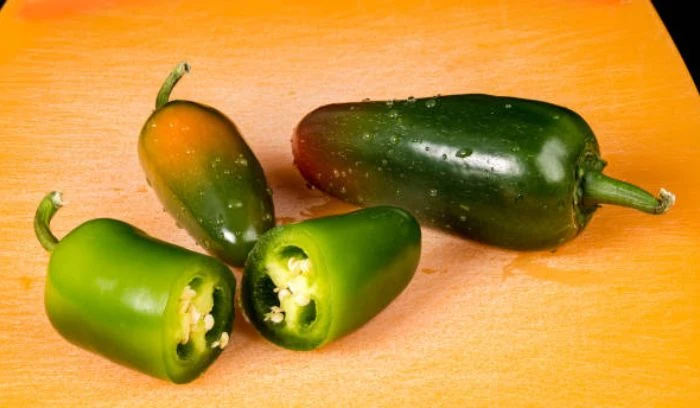
| Attribute | Details |
|---|---|
| Pepper Name | Hungarian Wax Peppers (When Green) |
| Resemblance | Similar to jalapeños, but longer and with a smooth, slightly curved shape. |
| Flavor Profile | Sweet with a touch of spice, offering a milder heat than typical jalapeños. |
| Heat Level | Ranges from 5,000 to 15,000 SHU |
| Size | Longer than jalapeños |
| Texture | Smooth, slightly curved |
| Color | Green |
| Flavor | Sweet with a mild spice |
| Heat Intensity | Mild heat, offering a balance of flavor and spice without overpowering heat |
| Distinctive Feature | Longer, curved shape and a unique blend of sweet and spicy flavor |
When green, Hungarian Wax peppers can easily be mistaken for jalapeños because they share a similar color and shiny surface. However, the size of Hungarian Wax peppers stands out—they are usually longer, often growing up to six inches.
They also have a more curved shape, unlike the straighter profile of jalapeños. If you carefully feel the pepper, you’ll notice a smoother and slightly waxy texture, which is why they earned the name Hungarian Wax. These small but significant differences make it easier to spot the Hungarian Wax pepper when examined close.
In terms of flavor, these peppers offer a balance of mild sweetness and a bit more heat than jalapeños, though they’re not overwhelmingly hot. Cutting one open reveals thinner walls, which makes the pepper lighter to handle compared to the thicker flesh of jalapeños.
While you may usually encounter Hungarian Wax peppers in their yellow or red stages, green ones are often overlooked, which may confuse those who aren’t paying close attention. The key to identifying them is recognizing their length, curve, and the unique texture that separates them from the rest.
4. Poblano Peppers (Young)
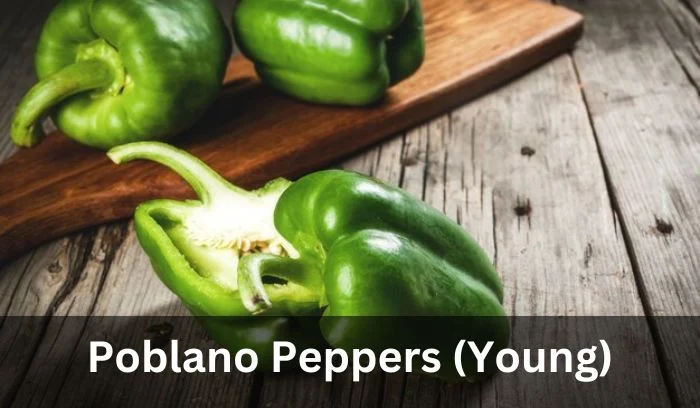
| Topic | Details |
|---|---|
| Size | Larger than jalapeños |
| Shape | Wide at the top, narrowing at the tip |
| Flavor Profile | Mild and earthy |
| Heat Level | 1,000–1,500 SHU, much milder |
Poblano peppers (young) are often confused with jalapeños when they’re still green and smooth in appearance. These peppers may look similar but have some distinct differences that make them stand out.
Poblanos are larger and broader than jalapeños, with a triangular shape that tapers to a narrower tip. Their size and shape give them a more uniform width, while jalapeños tend to stay more consistent in size.
When it comes to flavor, Poblano peppers are much milder and earthy, with a slightly sweet taste. On the Scoville scale, they are less spicy than jalapeños, making them a great option for dishes where a mild pepper flavor is needed without too much heat.
As these peppers grow, their plants become sturdier, and they often produce larger leaves. Their thicker walls and substantial weight make them ideal for stuffing, and once you learn to spot these signs, you can quickly tell the difference between a Poblano and a jalapeño.
5. Shishito Peppers (Some Varieties)
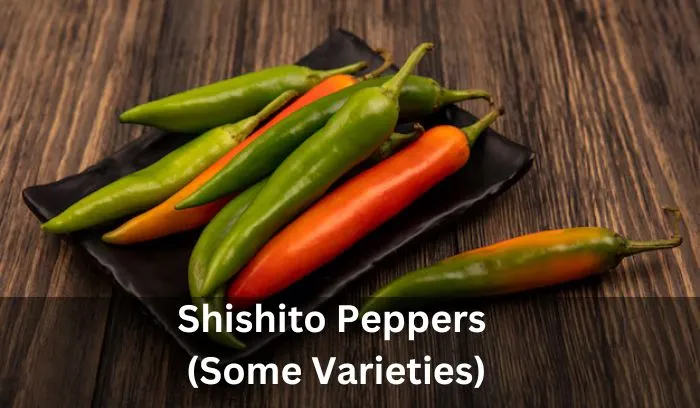
| Attribute | Details |
|---|---|
| Pepper Name | Shishito |
| Comparison | Smaller than jalapeños |
| Shape | Thin, smooth, sometimes wrinkled |
| Flavor Profile | Mild, slightly sweet |
| Heat Level | 100–1,000 SHU (very mild) |
| Taste | Subtle heat with sweet flavor |
| Usage | Ideal for frying, grilling, salads, appetizers, and stir-fries with a balanced taste of heat and sweetness |
When you see shishito peppers, you might initially mistake them for jalapeños due to their green color and smooth surface. However, once you start comparing them, the differences are clear. Unlike jalapeños, shishito peppers are generally smaller, typically measuring about 2–3 inches long, and their shape tends to be thinner.
While jalapeños can pack a punch of spicy heat, shishito peppers are much milder on the Scoville scale, making them a favorite for those looking for a mild pepper with a subtle kick. The wrinkled surface on some mature shishito peppers is another indicator to help you tell them apart, a feature that jalapeños don’t exhibit.
If you’re growing or buying them fresh, understanding these subtleties in appearance and texture differences is essential. The shape differences between shishito peppers and other pepper varieties make them easy to identify, especially when you’re picking them from your garden.
Their versatile nature means they can be used in various dishes, providing a delightful flavor without the overwhelming heat found in other peppers. The development of these peppers, from growth stages to mature size, shows their characteristics, which include a unique shape and traits that make them stand o the Hungarian Wax pepper when ut among other culinary peppers.
6. Green Cayenne Peppers
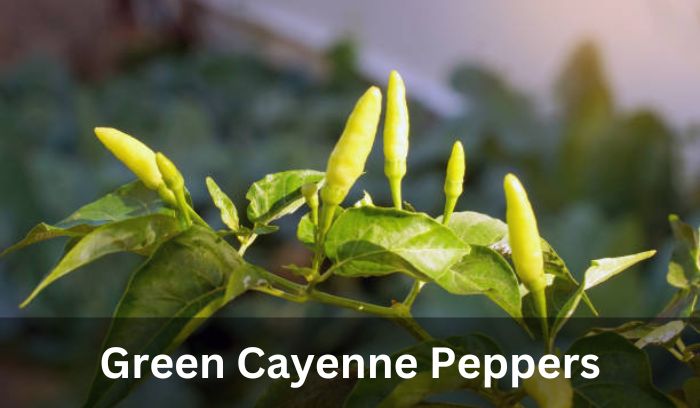
| Topic | Details |
|---|---|
| Size | Longer and thinner than jalapeños |
| Shape | Slim, curved |
| Flavor Profile | Tangy, slightly grassy |
| Heat Level | 30,000–50,000 SHU, very spicy |
Green cayenne peppers are easily recognizable by their thin, long, and often curved shape, setting them apart from other peppers like jalapeños, which tend to be shorter and more uniform.
These peppers shine with their glossy skin and their spicier flavor profile, registering between 30,000–50,000 SHU on the heat scale. Unlike mild peppers, the spicy kick of cayenne peppers makes them ideal for making chili flakes or adding a punch to dishes. The tangy, grassy flavor also brings a different taste compared to the more earthy jalapeños.
If you’re growing them in your garden, cayenne plants typically produce longer and narrower fruits, reaching about 4–6 inches. Their slender and slim body makes them stand out from stubby peppers like jalapeños.
As they mature, the thinner walls become easier to identify, and these differences in size and shape make mistaking them for other peppers less likely. Whether you’re growing them or using them in your kitchen, the identifying features are clear once you understand their unique characteristics.
7. Green Tabasco Peppers

| Topic | Details |
|---|---|
| Size | Smaller and slimmer than jalapeños |
| Shape | Short, thin, slightly tapered |
| Flavor Profile | Tangy, sharp bite |
| Heat Level | 30,000–50,000 SHU, much spicier |
Green Tabasco peppers are often confused with jalapeños due to their similar green color and smooth texture. However, they are noticeably smaller, measuring around 1–2 inches in length, and have a thinner body compared to the thicker and longer 2–3 inches jalapeños.
The heat level is a key distinguishing factor, as Tabasco peppers are much spicier, with a Scoville heat unit (SHU) rating ranging from 30,000 to 50,000, making them significantly hotter than jalapeños.
In terms of flavor, Tabasco peppers offer a sharp tang and a bright, almost citrusy bite, while jalapeños have a more earthy and mild taste. The plants that produce Tabasco peppers are generally bushier and yield smaller fruits in clusters, whereas jalapeño plants are more compact and produce fewer peppers.
When harvesting, the size, thin shape, and growth pattern of the plants are the best indicators to tell them apart. Once ripe, Tabasco peppers turn a vibrant red or orange, but when green, they can look similar to smaller jalapeños.
8. Caribbean Red Habanero (Immature Green Stage)

| Aspect | Details |
|---|---|
| Size | Small, similar to jalapeños |
| Shape | Rounder and bumpy |
| Heat Level | 300,000 to 445,000 SHU (extremely spicy) |
| Flavor Profile | Fruity and floral, with intense heat |
| Heat | Develops even in the immature green stage |
| Texture | Bumpy texture, characteristic of the Caribbean Red Habanero |
| Maturity | Immature green stage, with developing flavor and heat |
When you come across a Caribbean Red Habanero in its immature green stage, it might seem like a typical jalapeño at first glance, especially to the untrained eye. Both peppers are of a similar size, and the smooth surface of the green habanero can add to the confusion. However, there are key differences that help the Caribbean Red Habanero stand out as it matures.
The major distinction is the heat level. Habaneros are known as one of the spiciest peppers, with a Scoville rating between 300,000 and 445,000, far surpassing the milder jalapeño, which delivers much less heat.
As the habanero ripens, it starts to reveal its true identity. The shape of the green version is rounder with subtle bumps, which becomes more pronounced as it matures.
The color transformation is another key feature—as it turns from green to a bright red or orange when fully ripe, unlike the deeper red of a mature jalapeño. To confidently identify a Caribbean Red Habanero, keep an eye out for its rounder and bumpier shape, especially as it reaches the end of its green stage and begins to ripen.
9. Thai Chili Pepper (Green Stage)

| Aspect | Details |
|---|---|
| Size | Smaller, thinner than jalapeños |
| Shape | Long, thin, and curved |
| Heat Level | 50,000 to 100,000 SHU, much hotter |
| Flavor Profile | Sharp and fiery |
| Spiciness | Delivers a fiery experience, much more spicy than many other peppers |
When you look at Thai chili peppers in their green stage, they might initially resemble jalapeños because of their smooth surface and similar color. However, upon closer inspection, the differences become clear.
Thai chili peppers are much thinner and typically grow to be 1–2 inches long, with a slender, curved body that is quite distinct from the thick, uniform shape of a jalapeño.
The heat is where they truly stand out. Thai chili peppers are hotter with a Scoville range of 50,000 to 100,000, making them significantly spicier than a jalapeño. The sharp, immediate heat gives them a fiery and intense taste, which is very different from the more balanced warmth of a jalapeño.
These peppers are often used in dishes that demand a high level of heat, making their flavor stand out with a touch of earthy and mild sweetness. You can easily identify them by their delicate, curved body and the way they grow in clusters, making them easy to distinguish from other peppers.
How to Grow Peppers That Look Like Jalapeños
To grow peppers that resemble jalapeños, start by planting your jalapeño plant in full sun with well-draining soil and a warm temperature. It’s essential to prepare the soil by adding compost and ensuring it’s rich in organic matter.
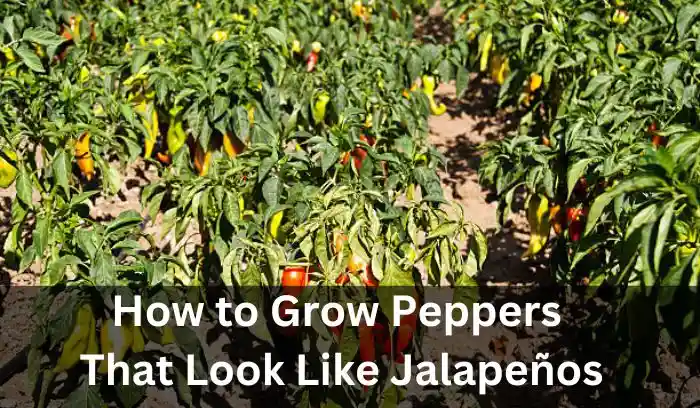
For the best results, plant in spring, and make sure the depth is around 6-10 inches. If you’re starting indoors, use a seed tray or plant directly outdoors when the weather allows.
Keep the soil moist, using a soaker for watering the roots while avoiding wetting the foliage. In about 80 days, the peppers should begin to blossom and set fruit, reaching full maturity.
Space your plants 12-18 inches apart, with row spacing of 3 inches for adequate room to grow. Consider pinching off flower heads on small plants to encourage healthy growth.
Adding mulch around your plants helps retain moisture, reduces weeds, and keeps the plants thriving. Use a balanced fertilizer or chicken manure for an added boost. After about 80 days, your peppers should be mature, ready to enjoy.
Uses of Peppers That Resemble Jalapeños
When cooking dishes like salsas or stuffed peppers, you can easily substitute peppers that resemble jalapeños. Poblano and Fresno peppers are two great alternatives that can bring unique flavors to your meals.
Poblano peppers, often dark green, are milder than jalapeños and add a smoky taste when cooked, making them perfect for stuffed peppers. These peppers are also wonderful as a garnish in recipes where a bit of heat and flavor are desired but without overwhelming the dish.
On the other hand, Fresno peppers, similar in shape and size to jalapeños, can be harvested when they’re fully mature and bright red, offering a sharper, slightly sweeter heat to dishes.
If you’re looking for spicier options, Serrano peppers are often hotter than jalapeños and work wonders in Mexican cuisine, adding a vibrant, spicy kick. For an intense heat experience, Thai Bird’s Eye Chilies bring intense heat and are tiny but pack a punch, often used in dishes that require a fiery element. These peppers are green chilies that add a unique flavor and spicy notes to your recipes.
FAQs
If you’re looking for a great substitute for jalapeños, Fresno peppers are the best option. They come from the same pepper family and have a similar spice level, making them ideal for replicating spicy flavor in your dishes. With their red variations, Fresno peppers are perfect for adding that familiar kick to salsas, stir-fries, and more.
If you’re seeking a pepper that’s slightly hotter than the jalapeño, try the Fresno chile pepper. Grown in California’s Fresno County, these peppers start out green and milder, but as they ripen and turn deep red, they become spicier and offer a fruitier and smokier flavor.
These peppers are perfect for adding a touch more heat to your dishes while keeping a balanced, flavorful kick—ideal for salsas, sauces, or garnishes.
The Fresno chili pepper, cultivated in 1952 in Fresno, California, looks like a jalapeño but is red when ripe. It has a fruitier, smokier, and spicier flavor, with a heat range of 2,500 to 10,000 SHU, making it a great alternative for a little extra kick in your dishes.
When you visit the grocery store or a salad bar, you’ll find green, orange, yellow, and red bell peppers. The red bell pepper is the healthiest since it stays on the vine the longest, which allows it to develop the most nutrition. It has higher levels of vitamins like vitamin C compared to the others.
In my experience, red peppers not only add a sweet flavor to meals but also offer great health benefits. So, for a nutritional boost, opt for red bell peppers next time!
If you’re out of jalapeños, Bhavnagari peppers are a great substitute. These mildly spicy vegetables work well as a pizza topping or in sandwiches. For added flavor, marinate them in lemon juice and mustard, then chop finely. They’re versatile, affordable, and bring a tangy twist to any dish.
Conclusion
When you’re looking for peppers that resemble jalapeños, it can be helpful to know a few key differences. For example, Serrano peppers are slimmer and hotter, making them a spicier alternative to jalapeños. If you’re after something milder, Fresno peppers are a great choice; they’re sweeter and less intense in flavor.
On the other hand, Hungarian Wax peppers have a longer shape and a waxy texture, providing a different visual and taste profile. Poblanos, which are larger with a triangular shape, also resemble jalapeños but are milder in heat. Meanwhile, Thai chili and cayenne peppers are both thinner and much spicier, making them excellent for those who enjoy extra heat.
Knowing the heat levels, shape, and unique characteristics of these peppers can help you make the right choice in your cooking. Understanding the confusion between them will lead to better decision-making when it comes to growing and using them in your dishes. With a bit of practice, identifying the right peppers will become second nature, allowing you to enjoy their varied flavors and heat in the kitchen!
See Also:
What Do Carrot Sprouts Look Like & When Do They Sprout
What Do Carrots Look Like When They Start to Grow


